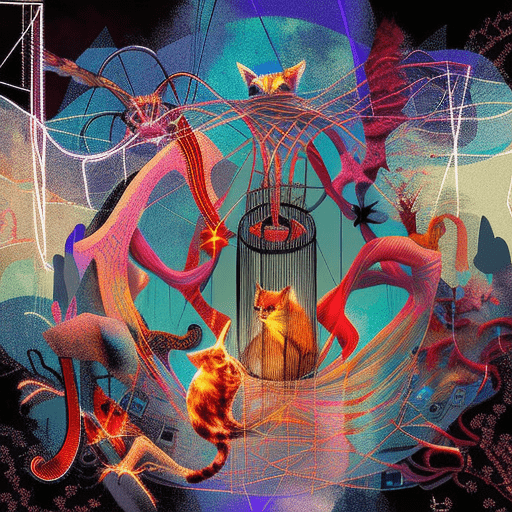One-line Summary:
Cat’s Cradle is a satirical novel that explores the absurdity of human existence through the lens of a fictional religion and a dangerous scientific discovery.
The Birth of Bokononism
In Kurt Vonnegut’s Cat’s Cradle, the narrator, John, becomes entangled in a series of events that lead him to the island of San Lorenzo. There, he discovers the religion of Bokononism, which was founded by a man named Bokonon. Bokononism is a satirical critique of organized religion, as it acknowledges its own falsehood but encourages its followers to believe in it anyway. The religion is based on the idea that all of humanity is connected through a complex web of lies and fictions, known as a “karass.” The central text of Bokononism is the “Books of Bokonon,” which contain a series of paradoxical and nonsensical teachings. Despite its absurdity, Bokononism provides comfort and purpose to its followers in a chaotic world.
The Discovery of Ice-Nine
Another significant aspect of Cat’s Cradle is the fictional scientific discovery of “ice-nine.” Ice-nine is a form of water that freezes at room temperature and has the ability to turn any liquid water it comes into contact with into solid ice-nine. This discovery, made by the eccentric scientist Felix Hoenikker, has the potential to destroy all life on Earth if it were to be released into the planet’s water supply. The race to possess and control ice-nine becomes a central plot point in the novel, as various characters, including John, become entangled in the pursuit of this dangerous substance.
The Absurdity of Human Existence
Throughout Cat’s Cradle, Vonnegut explores the absurdity of human existence and the destructive nature of human pursuits. The characters in the novel are driven by their desires for power, knowledge, and control, often leading to disastrous consequences. Vonnegut uses satire and dark humor to highlight the irrationality of human behavior and the futility of our attempts to find meaning in a chaotic world. The novel raises questions about the nature of truth, the dangers of scientific progress, and the role of religion in providing comfort and purpose.
Key Takeaways:
- Bokononism satirizes organized religion, highlighting the absurdity of belief systems.
- The discovery of ice-nine serves as a metaphor for the destructive potential of scientific progress.
- The novel explores the irrationality and destructive nature of human pursuits.
- Vonnegut uses satire and dark humor to critique societal norms and human behavior.
- Cat’s Cradle raises questions about the nature of truth and the search for meaning in a chaotic world.
“Tiger got to hunt, bird got to fly; Man got to sit and wonder, ‘Why, why, why?’ Tiger got to sleep, bird got to land; Man got to tell himself he understand.” – Kurt Vonnegut, Cat’s Cradle
In conclusion, Cat’s Cradle is a satirical novel that explores the absurdity of human existence through the lens of a fictional religion and a dangerous scientific discovery. Vonnegut’s use of satire and dark humor highlights the irrationality and destructive nature of human pursuits, while also raising questions about the nature of truth and the search for meaning in a chaotic world. The novel serves as a critique of organized religion, scientific progress, and societal norms, reminding readers of the absurdity of our own existence.












